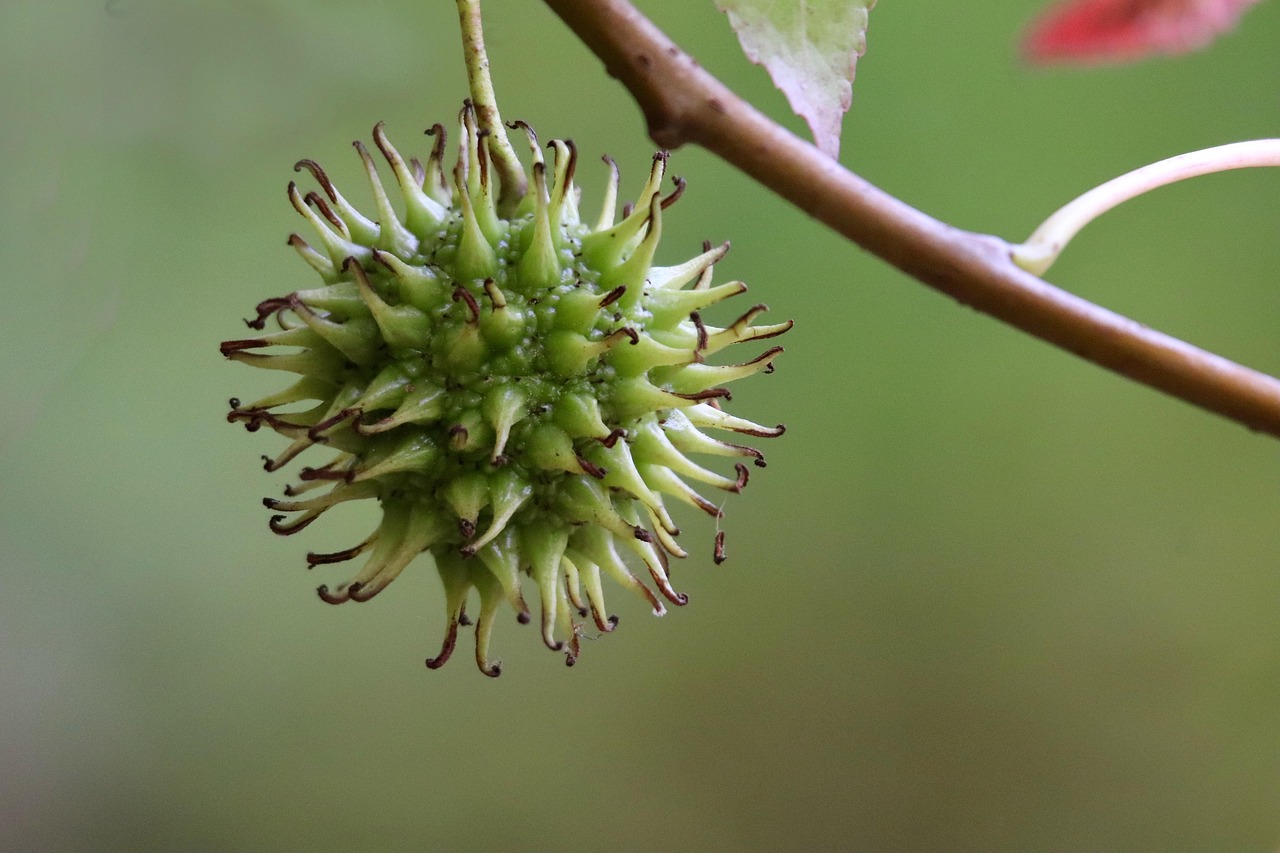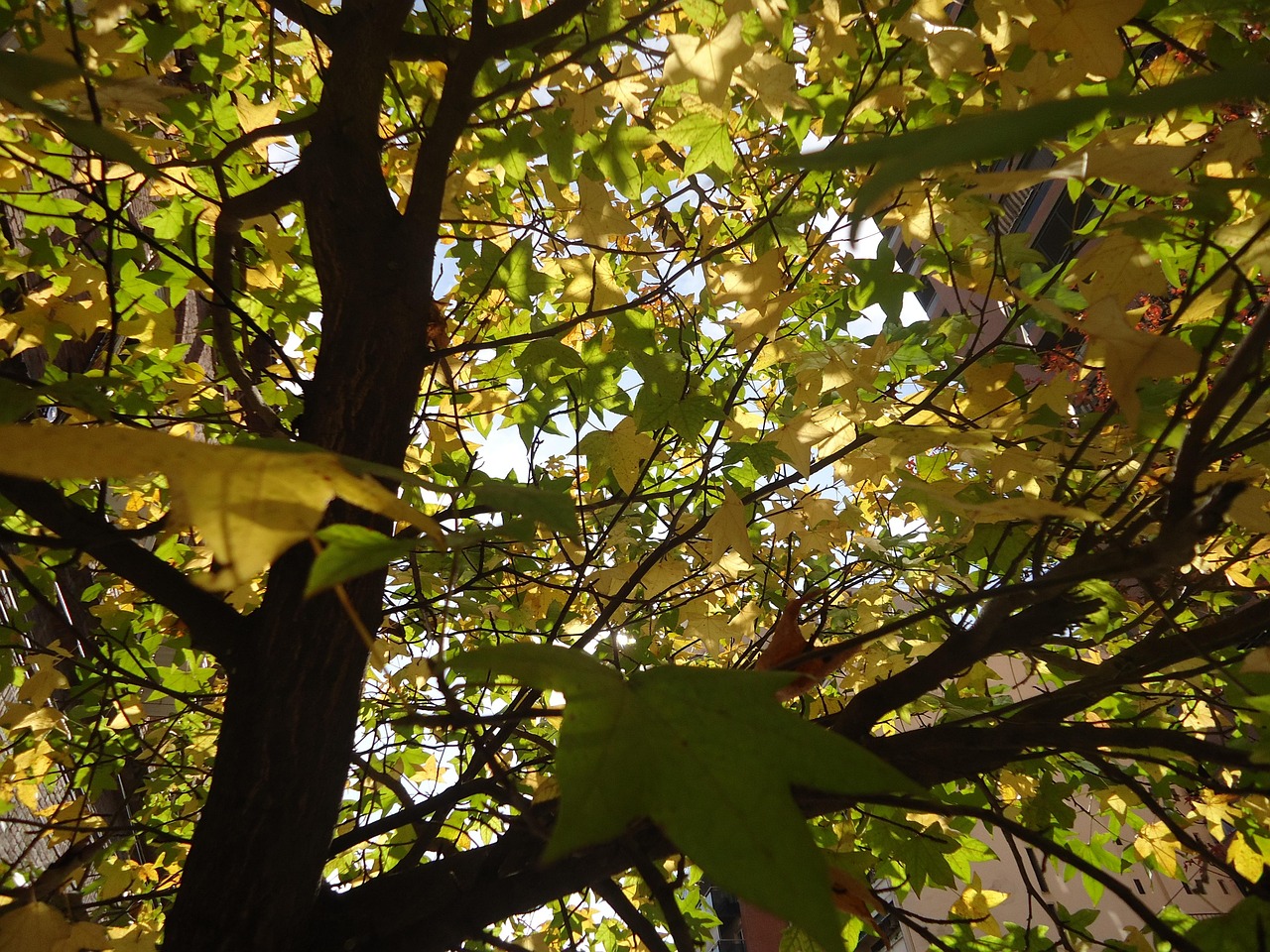Yes, sweetgum trees do grow in the state of Virginia. They thrive in various habitats, particularly in moist, well-drained soils and are commonly found in the eastern parts of the state.
Understanding Sweetgum Trees

Sweetgum trees, scientifically known as Liquidambar styraciflua, are deciduous trees native to the southeastern United States. They are well-known for their star-shaped leaves, vibrant fall colors, and distinctive spiky fruit. These trees can reach heights of 60 to 100 feet, making them a striking presence in landscapes.
Sweetgums are adaptable and can grow in various soil types, but they prefer slightly acidic soils that retain moisture. They are often found in mixed hardwood forests, along streams, and in wetlands. Their natural habitat extends from southern New England down to Florida and westward to Texas and Missouri. In Virginia, they are most prevalent in the southern regions.
Habitat and Growing Conditions
To understand where sweetgum trees thrive in Virginia, it is essential to look at their preferred growing conditions. Sweetgums flourish in areas that provide:
- Full sun exposure for optimal growth
- Moist, well-drained soils that are rich in organic matter
- A climate with warm summers and mild winters
These conditions are typically found in the following regions of Virginia:
- The Coastal Plain
- The Piedmont region
- Parts of the Appalachian foothills
In these areas, sweetgum trees can often be seen growing alongside other hardwood species such as oaks, maples, and birches. Their ability to adapt to different soil types allows them to occupy a range of ecological niches.
Growth Characteristics
Sweetgum trees exhibit several notable growth characteristics that make them unique.
| Characteristic | Description |
|---|---|
| Height | 60 to 100 feet |
| Width | 30 to 50 feet |
| Bark | Rough and furrowed, dark brown to grayish |
| Leaf Shape | Star-shaped with five or seven lobes |
| Fall Color | Bright yellow, orange, and red hues |
The sweetgum’s unique star-shaped leaves not only add beauty to landscapes but also provide ample shade. In the fall, the vibrant colors attract attention and make these trees a popular choice for landscaping.
In summary, sweetgum trees are well-suited to Virginia’s climate and soil conditions. Their striking appearance and adaptability make them a valuable part of Virginia’s natural ecosystem.
Ecological Benefits of Sweetgum Trees
Sweetgum trees contribute significantly to their ecosystems. They provide essential habitats for various wildlife species. These trees support numerous birds, insects, and mammals, creating a vibrant community in their surroundings.
Wildlife Habitat
The dense foliage and robust structure of sweetgum trees offer shelter and nesting spots for birds. Species such as:
- Woodpeckers
- Warblers
- Chickadees
also find refuge in their branches. Additionally, the bark’s texture provides a habitat for insects, which in turn supports a food web that includes various animal species.
Fruit and Seed Production
Sweetgum trees produce round, spiky seed pods that contain seeds. These pods are an important food source for several animals, including:
- Squirrels
- Chipmunks
- Various bird species
The seeds are dispersed by wind and animals, aiding in the natural regeneration of sweetgum populations. This process is essential for maintaining biodiversity within forest ecosystems.
Cultural Significance and Uses
Beyond their ecological contributions, sweetgum trees have cultural significance and practical uses. They play a role in local traditions and industries.
Historical Uses
Historically, Native American tribes utilized sweetgum trees for various purposes, including:
- Medicinal applications, using parts of the tree for healing.
- Crafting items from the wood and bark.
The resin from sweetgum trees, known as storax, was also used for medicinal purposes and as incense in various cultural practices.
Modern Applications
Today, sweetgum wood is valued in the lumber industry for its durability and attractive appearance. It is commonly used for:
- Furniture making
- Cabinetry
- Flooring
The wood has a fine texture and is easy to work with, making it a popular choice among craftsmen and builders.
Landscaping with Sweetgum Trees
Sweetgum trees are often used in landscaping due to their aesthetic appeal and adaptability. When considering sweetgums for landscaping projects, here are some key points to keep in mind:
Aesthetic Value
The star-shaped leaves and brilliant fall colors of sweetgum trees add visual interest to any landscape. They can serve as:
- Specimen trees in parks or yards
- Shade trees along streets or sidewalks
- Part of mixed plantings in gardens
Considerations for Planting
When planting sweetgum trees, it is important to consider their growth requirements and potential challenges:
- Space: Ensure adequate space for their height and spread, as they can grow quite large.
- Soil Conditions: Choose well-drained soil that retains moisture without becoming waterlogged.
- Pests and Diseases: Monitor for common pests like aphids and diseases such as root rot.
With proper care, sweetgum trees can thrive and enhance the beauty of any landscape for many years.
Common Pests and Diseases Affecting Sweetgum Trees


While sweetgum trees are generally hardy, they can be susceptible to various pests and diseases. Understanding these issues is crucial for maintaining healthy trees.
Pests
Some common pests that affect sweetgum trees include:
- Aphids: These small insects feed on the sap of the tree. They can weaken the tree and cause leaves to curl.
- Scale Insects: Scale attaches themselves to the bark and can hinder growth by sucking the sap.
- Webworms: These caterpillars create webs in the tree’s branches, defoliating the leaves and damaging the tree.
Regular monitoring is essential. If you notice any signs of infestation, consider using insecticidal soap or neem oil to manage these pests effectively.
Diseases
Sweetgum trees can also be affected by several diseases:
- Leaf Spot: This fungal disease causes dark spots on leaves, leading to premature leaf drop.
- Root Rot: Often caused by overwatering or poorly drained soil, root rot can be fatal if not addressed promptly.
- Canker Diseases: Cankers can develop on branches or the trunk, leading to dieback and tree decline.
To prevent diseases, ensure proper watering practices and avoid planting sweetgums in overly wet areas.
Care and Maintenance of Sweetgum Trees
Proper care and maintenance are crucial for ensuring the health and longevity of sweetgum trees. Regular attention can lead to a thriving tree that enhances the landscape.
Watering Practices
Sweetgum trees require consistent moisture, especially during dry periods. Here are some watering tips:
- Water newly planted trees thoroughly to help establish their root systems.
- During prolonged dry spells, provide deep watering once a week to maintain soil moisture.
- Avoid overwatering, as this can lead to root rot.
Fertilization
Fertilization can promote healthy growth in sweetgum trees. Consider these guidelines:
- Use a balanced fertilizer with equal parts nitrogen, phosphorus, and potassium in early spring.
- Avoid excessive fertilization, which can lead to rapid growth that weakens the tree.
- Conduct a soil test to determine specific nutrient needs before applying fertilizer.
Pruning Techniques
Pruning is essential for maintaining a healthy structure and appearance. Follow these pruning tips:
- Prune during late winter or early spring before new growth starts.
- Remove dead or damaged branches to promote better airflow and reduce disease risk.
- Avoid topping the tree, as this can lead to weak growth and increase susceptibility to pests.
Environmental Considerations
Sweetgum trees play an important role in their environment. They help improve air quality by absorbing carbon dioxide and releasing oxygen. Additionally, they contribute to soil health through leaf litter that enriches the ground with organic matter.
Biodiversity Support
The presence of sweetgum trees encourages biodiversity. Their unique habitats attract various species of birds, insects, and small mammals. Promoting diverse plant life around sweetgum trees also enhances their ecological contribution.
Climate Adaptability
Sweetgum trees are well-suited for adapting to changing climate conditions. They can withstand periods of drought once established and are resilient in varying soil types. This adaptability makes them a valuable species for reforestation efforts and urban landscaping.
Potential Challenges for Sweetgum Trees
Despite their many advantages, sweetgum trees can face several challenges in Virginia. Understanding these challenges can help in effective management and care.
Environmental Stressors
Sweetgum trees are susceptible to environmental stressors, which can impact their health and growth. Some common stressors include:
- Drought: Extended periods without rain can weaken trees, making them more vulnerable to pests and diseases.
- Soil Compaction: Heavy foot traffic or construction activities can compact soil, reducing water infiltration and root growth.
- Urban Pollution: Increased pollution in urban areas can negatively affect tree health and growth.
To mitigate these issues, it is essential to monitor environmental conditions and take proactive measures when necessary.
Invasive Species
Invasive plant species can compete with sweetgum trees for resources. These invasive species often grow faster and can overshadow young sweetgums, inhibiting their growth. Some common invasive plants in Virginia include:
- Kudzu: This fast-growing vine can smother trees and reduce available sunlight.
- Japanese Honeysuckle: This vine can outcompete native plants, impacting local ecosystems.
Regular maintenance and removal of invasive species can help protect sweetgum trees and promote a healthier environment.
Sweetgum Trees in Urban Settings

Sweetgum trees are becoming increasingly popular in urban landscaping due to their adaptability and aesthetic appeal. However, planting these trees in city environments comes with its own set of considerations.
Urban Planting Benefits
Planting sweetgum trees in urban areas offers several benefits:
- Shade: Their large canopy provides shade, helping to cool urban heat islands.
- Aesthetic Appeal: The vibrant fall colors enhance the beauty of city landscapes.
- Air Quality Improvement: They improve air quality by filtering pollutants and providing oxygen.
Challenges in Urban Environments
While sweetgum trees are beneficial, there are challenges to consider:
- Space Limitations: Urban areas often have limited space for tree roots, which can affect their growth.
- Pavement Damage: Roots may lift sidewalks or driveways, leading to maintenance issues.
- Ballooning Pods: The spiky seed pods can create litter problems in parks or yards.
Proper planning and site selection are crucial when incorporating sweetgum trees into urban settings to maximize benefits while minimizing challenges.
Conclusion
Sweetgum trees are a valuable addition to Virginia’s landscapes, offering ecological, aesthetic, and cultural benefits. Their adaptability makes them suitable for various environments, from forests to urban settings. While they face certain challenges such as pests, diseases, and environmental stressors, understanding how to care for sweetgum trees can lead to successful growth and sustainability.
Their role in supporting wildlife and improving air quality highlights their importance in maintaining healthy ecosystems. As communities continue to seek ways to enhance green spaces, sweetgum trees will undoubtedly play a significant role in achieving these goals. With proper care and attention, sweetgum trees will remain a cherished part of Virginia’s natural heritage for generations to come.
